Product labels play a critical role in not only informing potential customers but also building brand recognition. In fact, a study by Label Insights reported that 94% of consumers are more likely to be loyal to a brand that provides full transparency in their labels.
Whether it’s a small business launching a new product, or a well-established company rebranding an entire line, the speed and accuracy of the label design and printing process can significantly impact time-to-market, label quality, and overall brand success. However, traditional labeling methods can be slow, error-prone, and inefficient, often resulting in incorrect labels that can lead to costly setbacks.
Let’s take a look at some best practices for streamlining your label design and printing process, helping you reduce delays and ensure high-quality output that meets production goals, brand expectations, and industry standards.
1. Streamline Collaboration Between Teams
Centralize Communication and Feedback
Inefficient communication is a common cause of delays in the label design process. Relying on scattered emails or multiple feedback loops often results in miscommunication and costly errors. To avoid this, centralize communication through collaborative design platforms, where stakeholders can easily provide real-time feedback and approvals.
By defining clear roles for each phase—such as design, content approval, and compliance checks—you can reduce bottlenecks and keep the process moving efficiently. Setting firm deadlines for each review stage further minimizes delays and keeps your project on track, ensuring accurate labeling from start to finish.
Adopt a Label Management Software
Label management software is an essential tool for brands looking to streamline their labeling process. It helps teams manage design, version control, and regulatory approvals on a single platform, reducing the time spent on manual tracking. With a centralized system, everyone involved—designers, compliance officers, and marketers—can ensure timely and accurate labeling. By avoiding the inefficiencies of traditional labeling methods, you can produce accurate labels faster and with fewer errors.
2. Build Efficient Design Workflows
Create Reusable Templates
Starting from scratch with every new label design is not only time-consuming but also increases the risk of inconsistency. Instead, create reusable templates that incorporate all essential elements like dimensions, regulatory information, and brand-specific details. Templates make it easy for designers to quickly adjust for new products or seasonal variations without starting over, allowing them to focus on creative elements while adhering to industry standards.
Ensure that your templates comply with industry standards, such as FDA or European Union regulations, so you avoid potential compliance issues down the line. This proactive approach minimizes last-minute redesigns and helps streamline your design process while ensuring consistent labels across all product lines.
Implement Automated Design Elements
Variable Data Printing (VDP) is a game-changer for companies looking to personalize labels at scale. Automated design software allows you to dynamically insert product-specific information—such as batch numbers, expiration dates, and barcodes—without the need to manually update each label. This is where automated labeling systems can make a big difference.
This automation not only speeds up production but also reduces the likelihood of human error, which can be costly in both time and money when it leads to labeling errors. With design automation capabilities, you can accelerate your production timelines while maintaining the precision needed for high-quality, compliant, accurate labeling.
3. Leverage the Benefits of Hybrid Printing
Flexibility for Both Large and Small Runs
Hybrid printing combines traditional labeling methods, such as flexographic, with digital technology, offering the flexibility to efficiently handle both large and small label runs. This allows you to take advantage of the cost efficiency of traditional methods for larger jobs, while digital printing makes it easier to manage smaller runs or frequent design changes without the need for time-consuming setups.
Hybrid printing is particularly useful for brands that need to produce both regular production labels and more customized options, such as seasonal or promotional designs. This flexibility ensures that you can meet demand quickly while maintaining high-quality standards and accurate labels throughout production.
Customization Without Compromising Speed
One key advantage of hybrid printing is that it allows for customization without sacrificing production speed. Whether you need to manage multi-SKU product lines, seasonal updates, or short-run promotional labels, hybrid printing allows you to make quick adjustments. This ensures that labels remain market-ready while avoiding costly production delays and delivering accurate labels every time.
By integrating hybrid printing solutions into your labeling process, you can respond swiftly to changes in market demands while keeping your label production efficient and consistent.
4. Optimize Your Supply Chain for Label Materials
Establish Reliable Supplier Relationships
Your supply chain can significantly impact your label production timeline. Working with reliable suppliers who can deliver high-quality materials consistently is essential to avoiding delays. Establish long-term relationships with trusted suppliers and order label materials in bulk when possible to ensure you have what you need when you need it.
Having a reliable network of suppliers also allows you to pivot quickly if demand spikes, ensuring there’s no downtime in your production line and allowing for design for manufacturability.
Consider Sustainability and Compliance from the Start
Today’s consumers are more environmentally conscious than ever, and sustainability is becoming a key factor in packaging and labeling decisions. Integrating sustainability into your labeling process from the start not only helps the environment but also eliminates future redesigns due to regulatory changes.
To future-proof your products, ensure that your labels are made from sustainable materials, such as recyclable or biodegradable adhesives and paper. This will help you avoid delays caused by redesigns and repositioning to meet new regulatory requirements set by regulatory bodies.
5. Prioritize Compliance and Regulatory Considerations Early
Embed Regulatory Compliance into the Design Process
Compliance should never be an afterthought. Regulations governing product labeling—whether for health, safety, or ingredient information—vary by industry and location. Building compliance checks into your design phase helps prevent costly mistakes and delays later in the process.
Ensuring that your labels are compliant from the beginning means your products are ready to go to market without any unexpected setbacks.
Use Software for Compliance Audits
Manual compliance checks can be time-consuming and prone to error. Investing in label auditing software can automatically review your designs for adherence to industry-specific regulations, flagging potential issues early on. This reduces the time spent on manual reviews and speeds up the approval process, ultimately helping you deliver accurate labeling more efficiently.
With compliance tools in place, you can focus on production without worrying about regulatory setbacks, giving your business a competitive edge in getting products to market faster.
6. Continuous Improvement: Monitor and Optimize Your Labeling Process
Regularly Audit Labeling Processes
The key to continuous improvement is regularly auditing your label production process. After each project, conduct a post-mortem to identify inefficiencies, bottlenecks, or common labeling mistakes. Whether it’s missed deadlines, quality issues, or communication breakdowns, this analysis helps you refine your process for future projects.
Monitoring your workflows and making iterative improvements can lead to faster turnaround times and fewer errors, helping you maintain speed and efficiency as your business grows.
By refining your workflows, you can produce high-quality labels faster and more cost-effectively.
Final Thoughts
Accelerating your product label design and printing process requires a combination of streamlined collaboration, efficient design workflows, and smart technology investments. By centralizing feedback, adopting label management software, and embedding compliance checks early in the design phase, you can reduce delays and ensure your labels are market-ready without compromising on quality.
For companies looking to further optimize their labeling process, Epsen Hillmer offers integrated solutions that can support every step, from design to delivery. With years of experience in the label printing industry, Epsen Hillmer provides the tools and expertise needed to streamline your workflows and achieve your production goals efficiently.
Want more tips on improving your labeling process? Sign up for our newsletter to stay informed with the latest industry insights and best practices: Epsen Hillmer Newsletter.


